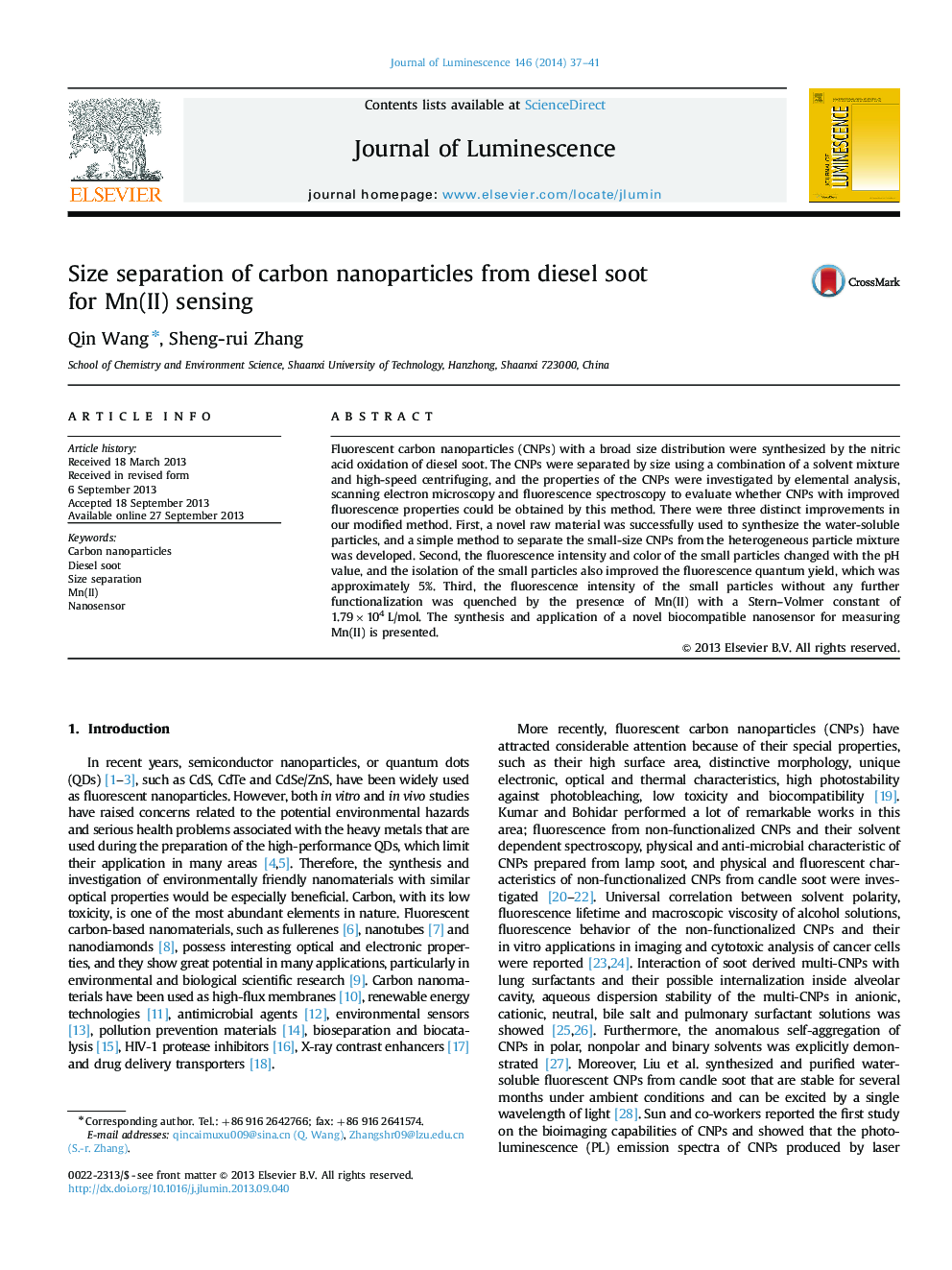| Article ID | Journal | Published Year | Pages | File Type |
|---|---|---|---|---|
| 5400301 | Journal of Luminescence | 2014 | 5 Pages |
â¢Combustion soot of diesel was first used to synthesize the CNPs.â¢A simple method to separate the small-size CNPs was developed.â¢The fluorescence intensity and color of small particles changed with the pH value.â¢The isolation of the small particles improved the fluorescence quantum yield.â¢Application of a novel biocompatible nanosensor for measuring Mn(II) is presented.
Fluorescent carbon nanoparticles (CNPs) with a broad size distribution were synthesized by the nitric acid oxidation of diesel soot. The CNPs were separated by size using a combination of a solvent mixture and high-speed centrifuging, and the properties of the CNPs were investigated by elemental analysis, scanning electron microscopy and fluorescence spectroscopy to evaluate whether CNPs with improved fluorescence properties could be obtained by this method. There were three distinct improvements in our modified method. First, a novel raw material was successfully used to synthesize the water-soluble particles, and a simple method to separate the small-size CNPs from the heterogeneous particle mixture was developed. Second, the fluorescence intensity and color of the small particles changed with the pH value, and the isolation of the small particles also improved the fluorescence quantum yield, which was approximately 5%. Third, the fluorescence intensity of the small particles without any further functionalization was quenched by the presence of Mn(II) with a Stern-Volmer constant of 1.79Ã104Â L/mol. The synthesis and application of a novel biocompatible nanosensor for measuring Mn(II) is presented.
